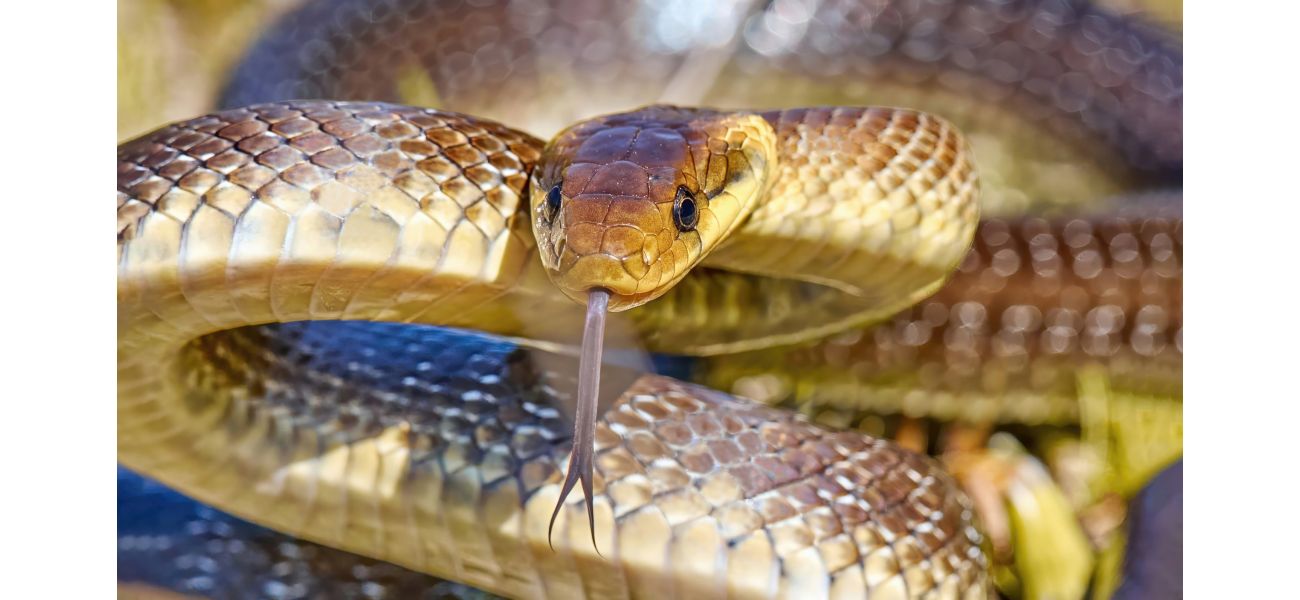A 2m-long snake is reproducing in British homes, residing in attics and walls.
Scientists discovered that invasive snakes depend on human environments, including homes.
October 16th 2024.

Thousands of years ago, the Aesculapian snake was a common sight in the UK. However, it disappeared from the wild, leaving behind only faint traces of its existence. But, to everyone's surprise, these large, non-venomous snakes have made a comeback in recent years. In fact, they have been observed breeding in at least three regions in the UK, using the warm corners of human-made structures to survive.
According to a team of researchers, who closely monitored a group of 21 Aesculapian snakes between 2021 and 2022, these reptiles have adapted to their new surroundings by relying on "human habitats". Yes, you read that right - these snakes have been found crawling up walls and into attics, seeking shelter and warmth in inhabited buildings. This behavior is quite unusual compared to other native snake species in the UK, as they tend to avoid built-up urban areas.
The team, led by Tom Major, also found that male Aesculapian snakes showed a strong preference for buildings, while females preferred the safety of woodlands. This preference towards anthropogenic structures, such as buildings and culverts, is not surprising as they provide shelter, thermoregulation, and even egg-laying sites for these snakes.
But, where exactly are these invasive snakes breeding in the wild in the UK? Well, they have been spotted in at least three areas - around London Zoo in Regent's Park, near Bridgend in South Wales, and around Colwyn Bay in North Wales. These populations have been living here for some time now, but it wasn't until recently that researchers shed more light on their lifestyle and habits.
And to think that we may now have to worry about sharing our homes with these scaly creatures is quite unexpected. Using radio trackers, the researchers were able to monitor the movements and activities of the snakes in the Colwyn Bay population. They found that the snakes often took shelter in human-made features of the habitat, such as compost heaps, vegetation piles, and of course, buildings.
However, not all of the snakes were lucky enough to survive the study. Five of them died during the study, and one more shortly after. Three were killed by cars, one was preyed on by a buzzard, and one was cannibalized by a male snake. And unfortunately, one of them fell victim to a mammal, which is believed to be either a stoat, badger, or cat.
During their observations, the researchers also made an interesting discovery - they found eggs inside the compost heap of a residential home. This goes to show just how adaptable and resilient these snakes can be, as they have not been seen in the UK for over 300,000 years. In fact, they were only reintroduced to the UK after escaping from the Welsh Mountain Zoo in the 1970s.
Aesculapian snakes, which can grow to over 7ft long, are native to mainland Europe, ranging from France to Iran. They primarily feed on rats and kill their prey by constriction, similar to boas. But don't worry, they are not venomous and do not pose a threat to humans. So, the next time you come across one of these majestic creatures, don't be afraid - just admire them from a safe distance.
According to a team of researchers, who closely monitored a group of 21 Aesculapian snakes between 2021 and 2022, these reptiles have adapted to their new surroundings by relying on "human habitats". Yes, you read that right - these snakes have been found crawling up walls and into attics, seeking shelter and warmth in inhabited buildings. This behavior is quite unusual compared to other native snake species in the UK, as they tend to avoid built-up urban areas.
The team, led by Tom Major, also found that male Aesculapian snakes showed a strong preference for buildings, while females preferred the safety of woodlands. This preference towards anthropogenic structures, such as buildings and culverts, is not surprising as they provide shelter, thermoregulation, and even egg-laying sites for these snakes.
But, where exactly are these invasive snakes breeding in the wild in the UK? Well, they have been spotted in at least three areas - around London Zoo in Regent's Park, near Bridgend in South Wales, and around Colwyn Bay in North Wales. These populations have been living here for some time now, but it wasn't until recently that researchers shed more light on their lifestyle and habits.
And to think that we may now have to worry about sharing our homes with these scaly creatures is quite unexpected. Using radio trackers, the researchers were able to monitor the movements and activities of the snakes in the Colwyn Bay population. They found that the snakes often took shelter in human-made features of the habitat, such as compost heaps, vegetation piles, and of course, buildings.
However, not all of the snakes were lucky enough to survive the study. Five of them died during the study, and one more shortly after. Three were killed by cars, one was preyed on by a buzzard, and one was cannibalized by a male snake. And unfortunately, one of them fell victim to a mammal, which is believed to be either a stoat, badger, or cat.
During their observations, the researchers also made an interesting discovery - they found eggs inside the compost heap of a residential home. This goes to show just how adaptable and resilient these snakes can be, as they have not been seen in the UK for over 300,000 years. In fact, they were only reintroduced to the UK after escaping from the Welsh Mountain Zoo in the 1970s.
Aesculapian snakes, which can grow to over 7ft long, are native to mainland Europe, ranging from France to Iran. They primarily feed on rats and kill their prey by constriction, similar to boas. But don't worry, they are not venomous and do not pose a threat to humans. So, the next time you come across one of these majestic creatures, don't be afraid - just admire them from a safe distance.
[This article has been trending online recently and has been generated with AI. Your feed is customized.]
[Generative AI is experimental.]
0
0
Submit Comment





